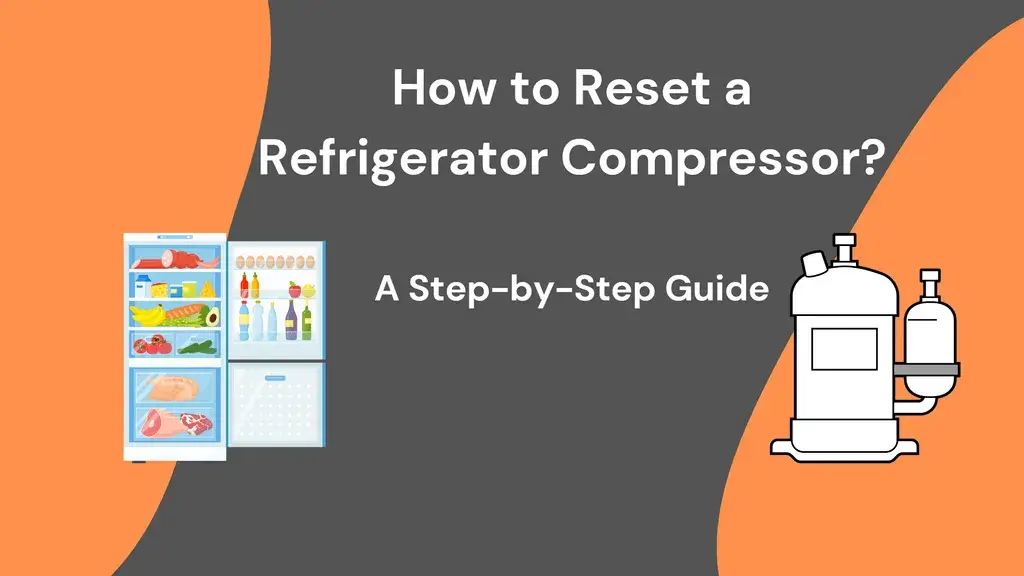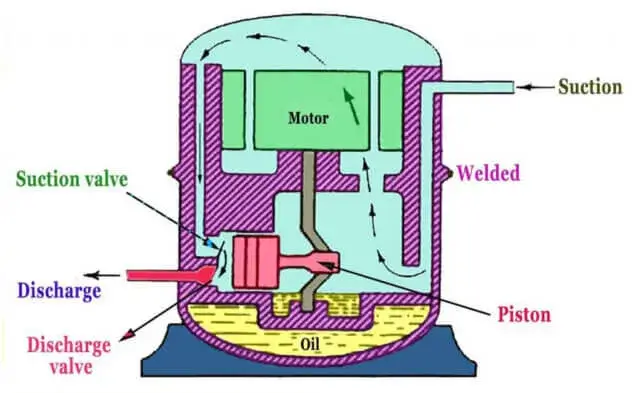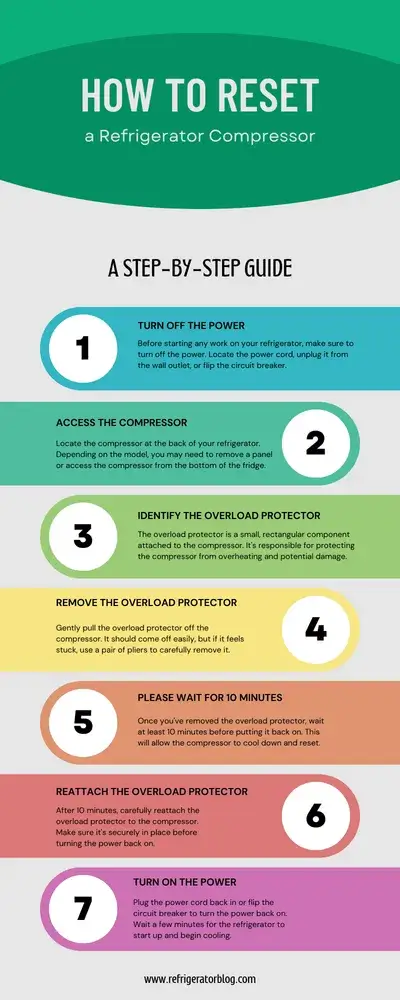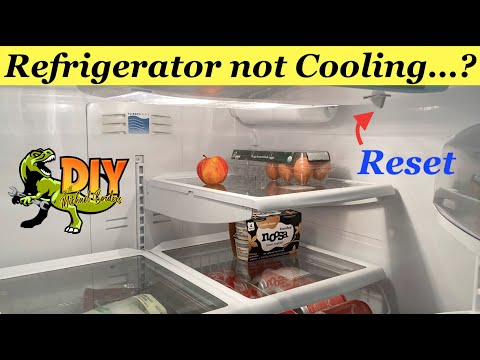Refrigerators are essential to our daily lives, and a malfunctioning compressor can be inconvenient. If you’re experiencing issues with your fridge, such as not cooling properly, it could be due to a compressor problem. However, before calling in a professional, you can try resetting your compressor, which may resolve the issue. This article will show you how to reset a refrigerator compressor in simple steps and provide valuable tips and tricks on properly maintaining your refrigerator compressor. With our help, you can restore your fridge in no time!
Table Of Contents

How does a Refrigerator Compressor Work?
A refrigerator compressor is the heart and soul of any refrigerator. Without it, the appliance would be unable to regulate temperature and keep food fresh. But how does this critical piece of machinery actually work?

Most modern refrigerators use a hermetically sealed compressor that combines two main components: an electric motor and a pump. The electric motor helps power the pump. The compressor pumps refrigerant (typically R134a) through the cooling system. First, it compresses the low-pressure refrigerant into high-pressure vapor, then travels to the condenser. The high-pressure vapor cools and condenses into a liquid, releasing heat. The liquid refrigerant then flows through the evaporator, which absorbs heat and cools the air inside the fridge. The compressor then repeats the process, maintaining the temperature inside the refrigerator. Keeping everything at a nice cool temperature – perfect for storing all kinds of delicious foods!
Signs your Refrigerator Compressor needs Resetting
As part of regular maintenance, it’s essential to check that your refrigerator is running efficiently. If your refrigerator isn’t cooling correctly, it could be due to a malfunctioning compressor. A reset can help restore the system to its optimum performance level and help you avoid more costly repairs later on. If you’re not sure if your compressor needs resetting, here are a few tell-tale signs:
- The refrigerator is not cooling properly
- The compressor is making loud or unusual noises
- The fridge is cycling on and off frequently
- The compressor is vibrating excessively
First and foremost, you will likely hear an unusually loud noise from the refrigerator when it is running. This can be anything from a humming or continuous clicking or buzzing noise. Additionally, if your fridge isn’t maintaining the temperature correctly, it’s time for a reset. If food starts spoiling too quickly or frost builds up inside the freezer frequently. In that case, this may be an indication that something isn’t working properly and could use a resetting.
How to reset a Refrigerator Compressor?

Resetting a refrigerator compressor is an essential part of maintaining the appliance. Resetting the compressor helps extend the life of your fridge and preserves its quality performance. Resetting the compressor is easy and only takes a few minutes! First, turn off the power to your fridge for two or three minutes, then turn it back on again. This will cause any built-up pressure inside the appliance to be released and will usually restore normal functioning.
If this doesn’t work, follow this step-by-step guide to manually reset your refrigerator’s compressor.
- Turn off the power: Before starting any work on your refrigerator, make sure to turn off the power. Locate the power cord, unplug it from the wall outlet, or flip the circuit breaker.
- Access the compressor: Locate the compressor at the back of your refrigerator. Depending on the model, you may need to remove a panel or access the compressor from the bottom of the fridge.
- Identify the overload protector: The overload protector is a small, rectangular component attached to the compressor. It’s responsible for protecting the compressor from overheating and potential damage.
- Remove the overload protector: Gently pull the overload protector off the compressor. It should come off easily, but if it feels stuck, use a pair of pliers to carefully remove it.
- Please wait for 10 minutes: Once you’ve removed the overload protector, wait at least 10 minutes before putting it back on. This will allow the compressor to cool down and reset.
- Reattach the overload protector: After 10 minutes, carefully reattach the overload protector to the compressor. Make sure it’s securely in place before turning the power back on.
- Turn on the power: Plug the power cord back in or flip the circuit breaker to turn the power back on. Wait a few minutes for the refrigerator to start up and begin cooling.
Congratulations! You’ve successfully reset your refrigerator compressor. However, if you continue to experience issues with your refrigerator’s cooling system or have any other concerns. In that case, we recommend consulting with a professional appliance repair technician.
Before resetting the compressor, unplug your refrigerator from the power source to ensure your safety. Here are the steps to follow:
- Locate the Reset Button: Most modern refrigerators have a reset button at the back or bottom. Check the user manual if you need clarification on the location.
- Press the Reset Button: Press the reset button firmly and hold it for 10-15 seconds. Release the button once you hear a beep or click sound.
- Wait for the Compressor to Start: After releasing the reset button, plug your refrigerator back into the power source and wait for the compressor to start. It may take a few minutes to start up.
- Check for Proper Cooling: After the compressor starts, check if the fridge is cooling correctly. If you still need help, call in a professional to diagnose and fix the issue.
Tips to ensure your Refrigerator Compressor runs Smoothly
It’s essential to take good care of your refrigerator compressor to ensure it continues to work well. Here are some tips on ensuring your fridge compressor runs without a hitch.
- Clean the Condenser Coils: The condenser coils dissipate the compressor’s heat. Over time, these coils can become dirty and clogged with dust and debris, which can cause the compressor to overheat and fail. To prevent this from happening, it is crucial to clean the condenser coils regularly. To clean the condenser coils, first unplug the refrigerator. Then, locate the coils, usually on the back of the refrigerator or the bottom front. Next, use a vacuum cleaner or a brush to remove the dust and debris from the coils. You can also use a coil cleaning brush to remove stubborn dirt.
- Check the Door Seals: You should also check the door seals regularly to ensure they are tight and not worn out. The door seals are responsible for keeping the cool air inside the refrigerator. Replace them if necessary, as a damaged or loose seal can cause warm air to enter the fridge, making the compressor work overtime to keep things cold.
- Don’t Overload the Refrigerator: Overloading the refrigerator can block the airflow, which can cause the compressor to work harder and lead to increased energy bills and a shorter lifespan for the compressor. To prevent this from happening, leave some space between the items in the refrigerator to allow for proper airflow.
- Schedule Regular Maintenance: Finally, it is important to schedule regular maintenance for your refrigerator. A professional technician can inspect the compressor and other components of the fridge to ensure that they are functioning properly. Regular maintenance can prevent problems before they occur and extend the lifespan of your refrigerator.
Conclusion
A malfunctioning refrigerator compressor can be a frustrating problem, but resetting it may solve the issue. Following this step-by-step guide can save you the cost of hiring a technician. This article shows you how to reset a refrigerator compressor in simple steps. Remember to unplug your refrigerator from the power source before attempting any repairs. Call a professional if you’re unsure about any aspect of the process.
Refrigerant is an integral part of a modern refrigerator and helps to cool the air within its walls. However, too little refrigerant can cause your fridge to struggle to keep food cool and frozen. On the other hand, too much refrigerant can make your compressor overwork itself, leading to failure.
Poor maintenance can also increase the chances of breakdowns. For example, blocked filters or dirty condenser coils can prevent proper airflow in and out of the fridge.
Additionally, overheating due to extended running times can damage both internal components and external wiring, leading to a malfunctioning compressor.
